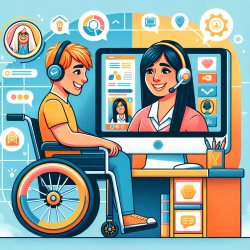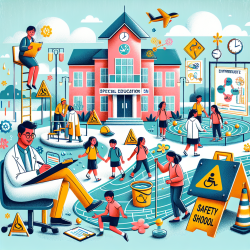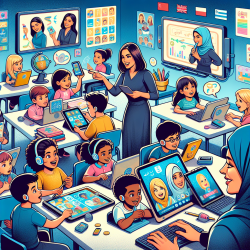The COVID-19 pandemic necessitated a rapid shift to distance learning, profoundly affecting all students, particularly those with severe developmental disabilities and high behavioral needs. A recent study titled "An Assessment of the Feasibility and Effectiveness of Distance Learning for Students With Severe Developmental Disabilities and High Behavioral Needs" by Tomaino et al. (2021) provides crucial insights into this transition. This blog will discuss the findings and implications of this study, offering practical advice for practitioners aiming to enhance their skills and outcomes in distance learning for this unique student population.
Study Overview
The study was conducted in two parts. Study 1 gathered survey data from parents and educators to evaluate the social validity, feasibility, and effectiveness of distance learning programs. Study 2 analyzed students' progress on their Individualized Education Plan (IEP) goals before and after the transition to distance learning.
Key Findings from Study 1
- Feasibility: Parents and educators generally had neutral attitudes toward the feasibility of distance learning. The Zoom platform was rated as easy to operate, but high levels of parental involvement were required.
- Effectiveness: Educators believed that students obtained educational benefits from distance learning, although parents were neutral on this point. Continued socialization and structure were noted as positive aspects, while limited social interactions and engagement were concerns.
Key Findings from Study 2
- IEP Goal Progress: The study found that students maintained about half of the skills addressed in their IEPs and made progress on an additional quarter of their IEP goals. This suggests that distance learning can be effective in maintaining and even advancing educational outcomes for this population.
Implications for Practitioners
Based on these findings, practitioners can take several steps to improve the effectiveness of distance learning for students with severe developmental disabilities and high behavioral needs:
- Parental Involvement: Provide comprehensive training and support to parents to help them facilitate their child's learning. This can include tutorials on using online platforms and strategies for managing challenging behaviors.
- Structured Environment: Maintain a consistent schedule and use familiar stimuli to help students adapt to the online learning environment. Consistency can help mitigate some of the challenges associated with the transition.
- Social Interaction: Incorporate opportunities for social interaction within the virtual classroom. Use breakout rooms for small group activities and ensure regular interaction with peers and educators.
- Data-Driven Decisions: Continuously collect and analyze data on student progress to make informed decisions about instructional strategies and interventions. Regularly review IEP goals and adjust as needed to ensure continued progress.
Encouraging Further Research
While the study provides valuable insights, it also highlights the need for further research to identify best practices and develop evidence-based protocols for distance learning. Future studies should investigate the specific impact of distance learning on challenging behaviors and explore potential mediators and moderators that influence student outcomes.
To read the original research paper, please follow this link: An Assessment of the Feasibility and Effectiveness of Distance Learning for Students With Severe Developmental Disabilities and High Behavioral Needs.










